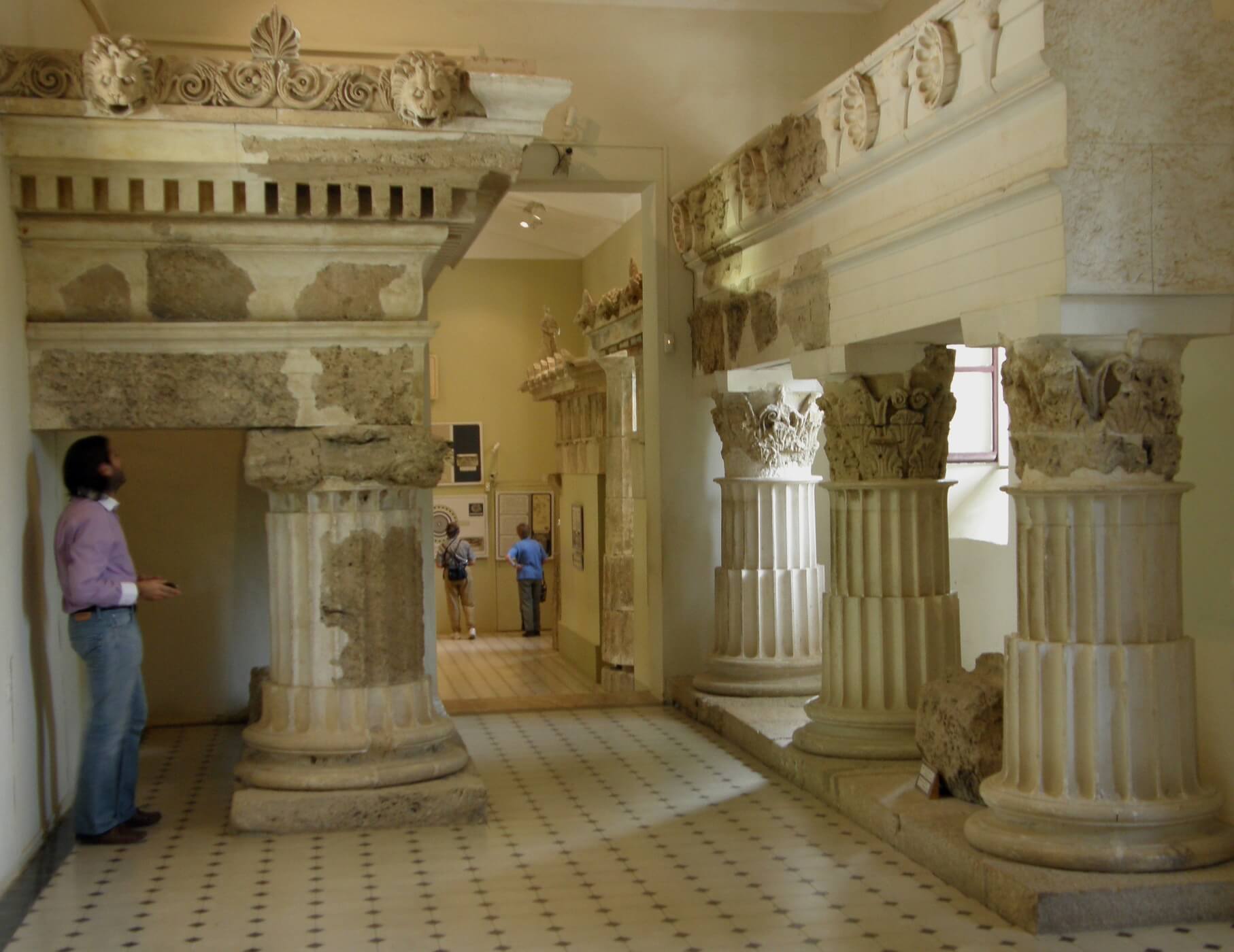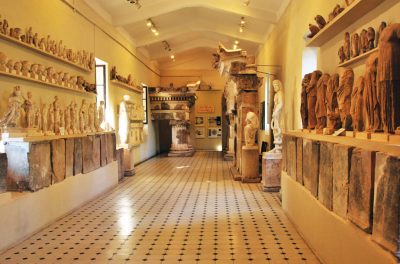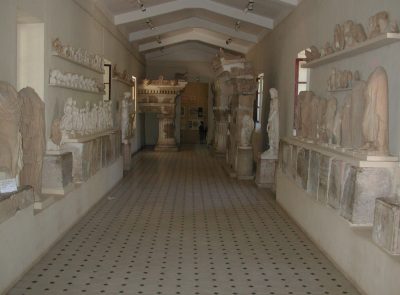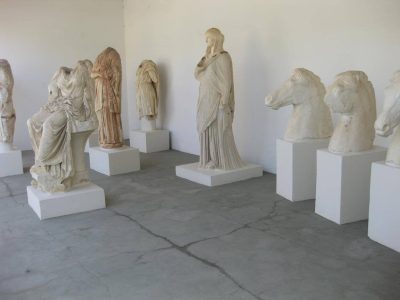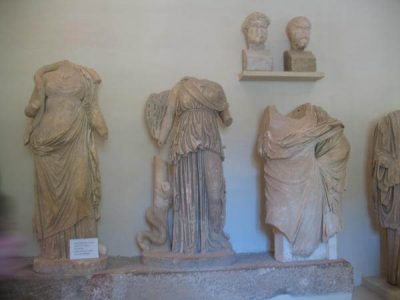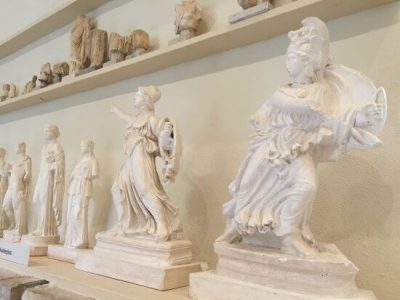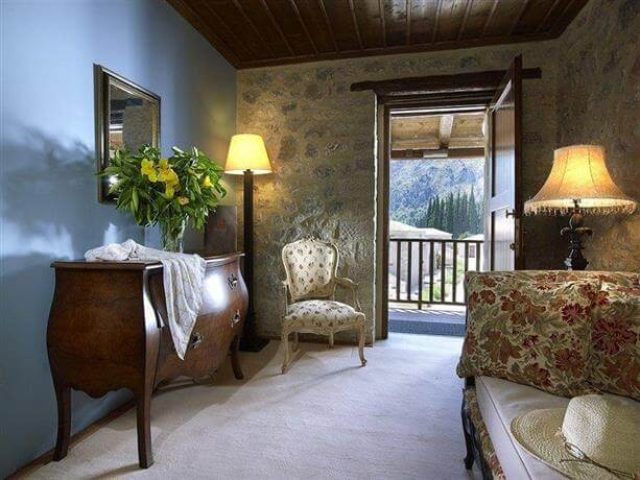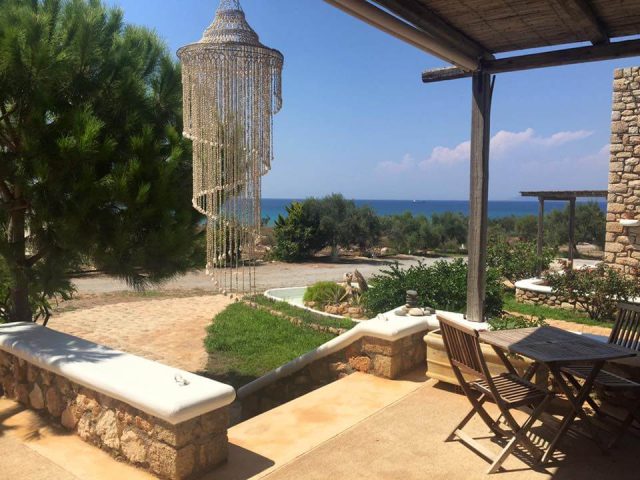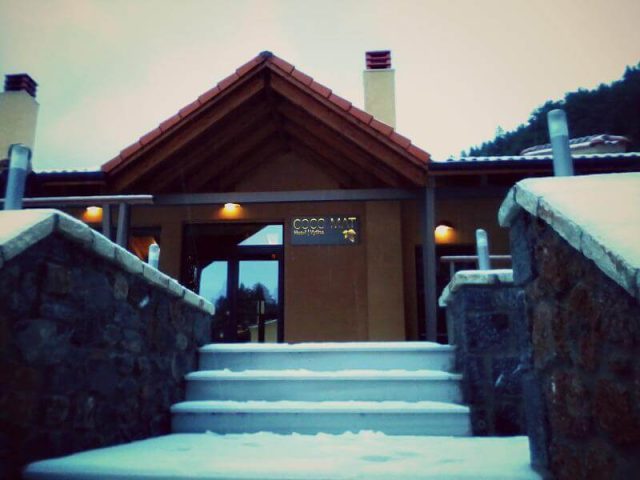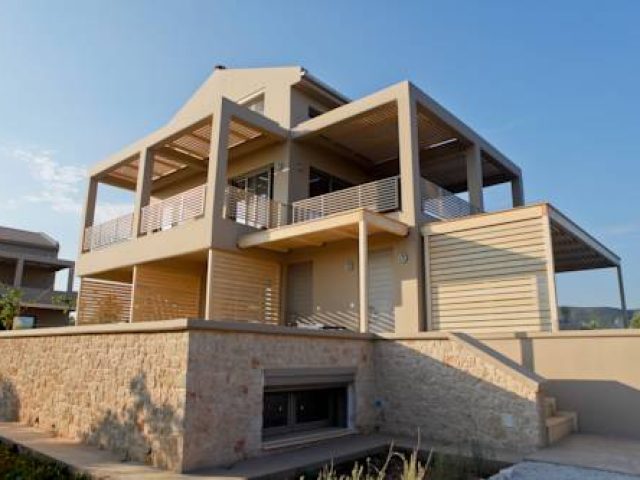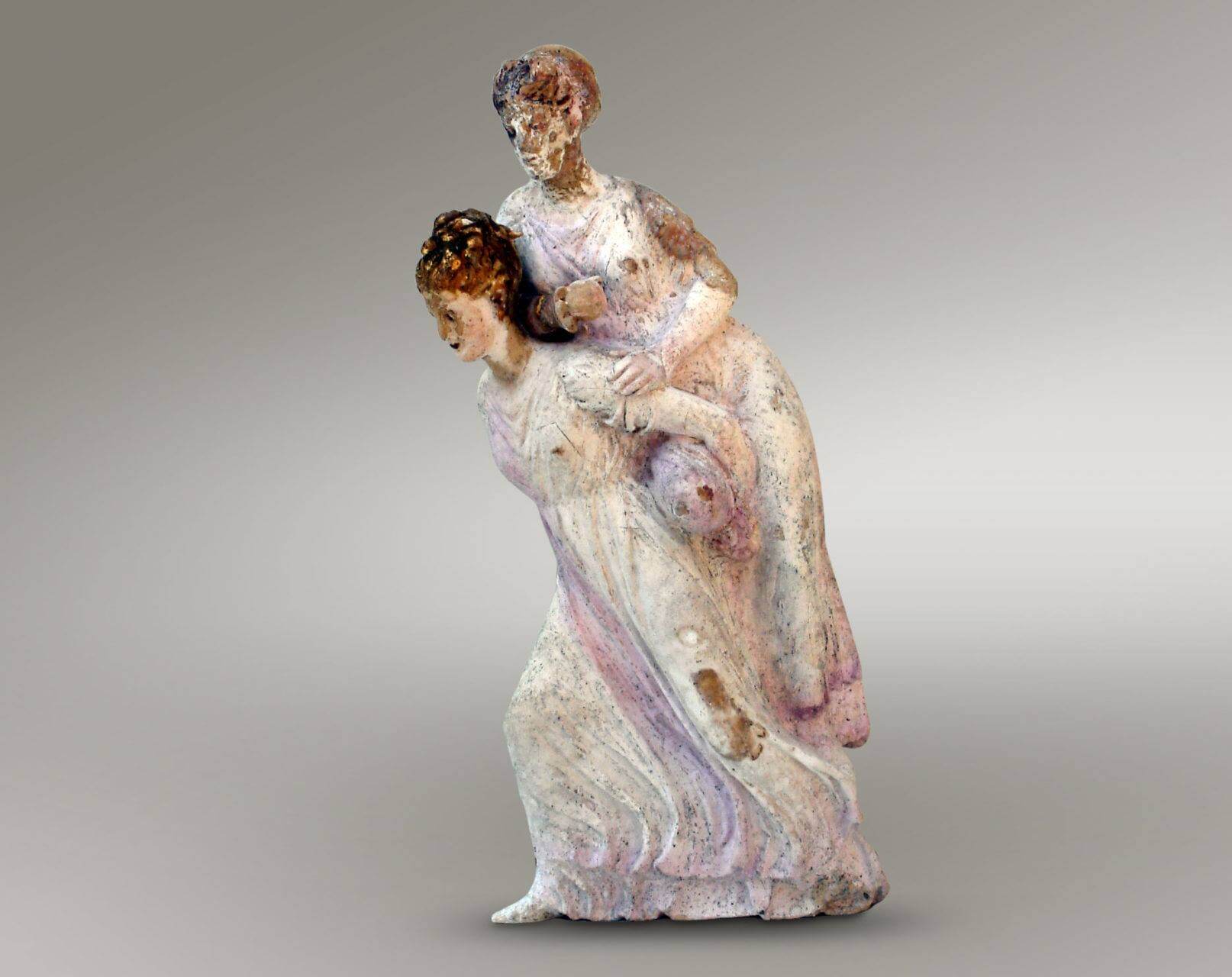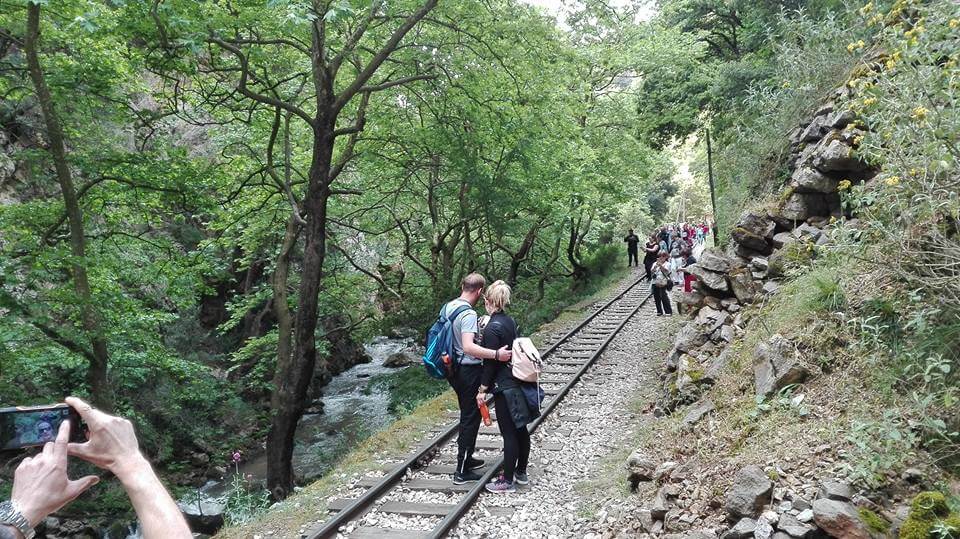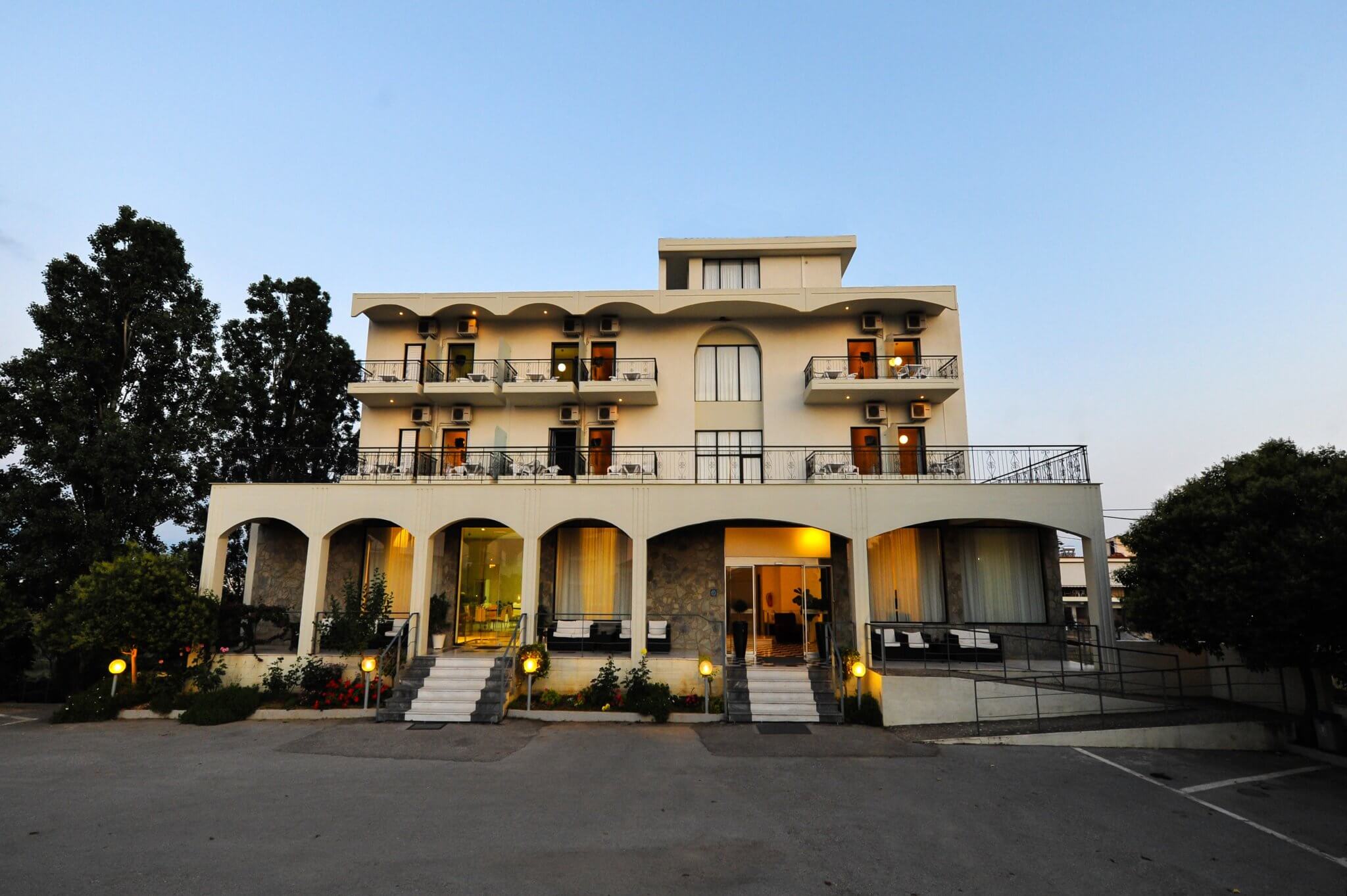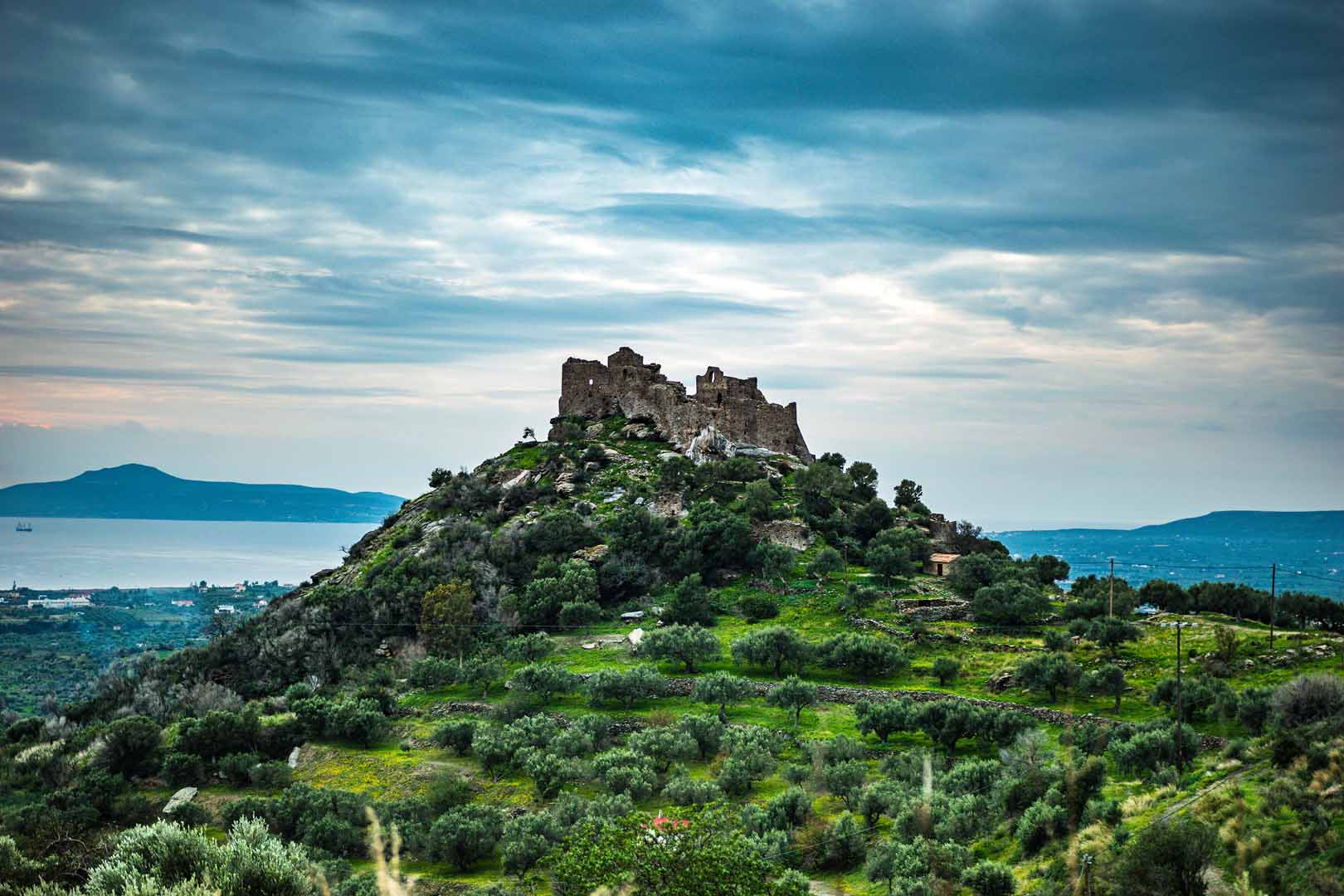The Museum of Epidaurus was built between 1902 and 1909 by the excavator of the sanctuary of Epidaurus, Panagiotis Kavvadias, in order to house the partial restorations of the major monuments of Asklepieion, as well as the most significant excavation findings. The sculptures that were transferred to the National Archaeological Museum of Athens were replaced by plaster casts in the Museum of Epidaurus.
In 1958 storerooms were built for the sculptures and pottery in the NW edge of the archaeological site. In 1971 a new hall was built to the NW of the museum to house the collection of inscriptions, displayed under the supervision of M. Mitsos. Since 1992, when the partial reconstruction of the Tholos was dismantled in order to be preserved and studied, a temporary exhibition of the monument has been housed in the second gallery of the museum, along with explanatory plans, photographs and representative architectural parts.
The Museum of Epidaurus contains collections of building inscriptions, hymns and inscriptions concerning the miraculous cures of Asclepius, Greek and Roman votive sculptures, votive and honorary inscriptions, reconstructions of the entablature of the Propylaea and the temples of Asclepius and Artemis, various architectural parts of monuments at the sanctuary of Asclepius, pediment sculptures and a temporary collection of architectural parts and sculptures of the Tholos.

